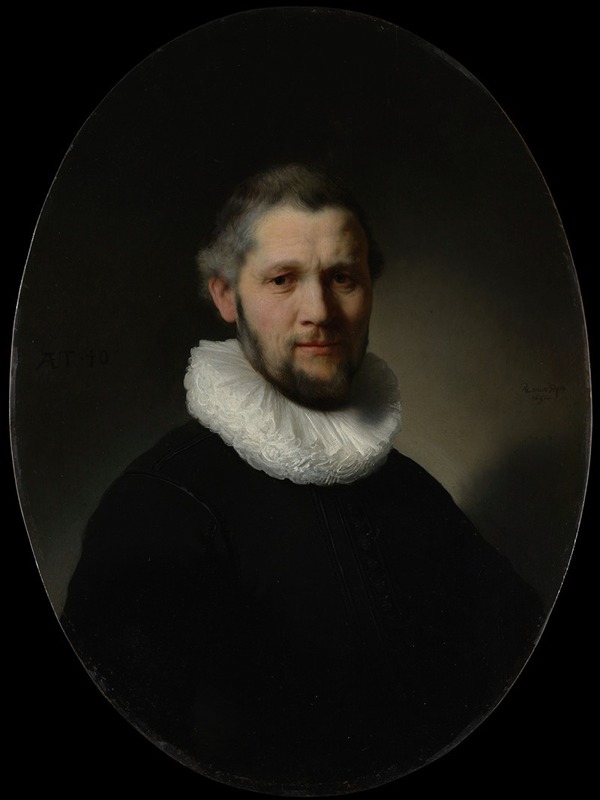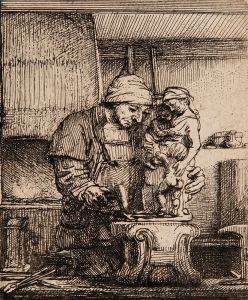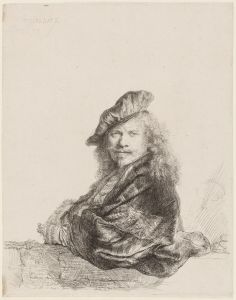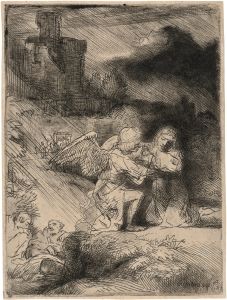
Portrait of a Man
A hand-painted replica of Rembrandt van Rijn’s masterpiece Portrait of a Man, meticulously crafted by professional artists to capture the true essence of the original. Each piece is created with museum-quality canvas and rare mineral pigments, carefully painted by experienced artists with delicate brushstrokes and rich, layered colors to perfectly recreate the texture of the original artwork. Unlike machine-printed reproductions, this hand-painted version brings the painting to life, infused with the artist’s emotions and skill in every stroke. Whether for personal collection or home decoration, it instantly elevates the artistic atmosphere of any space.
"Portrait of a Man" is a painting by the renowned Dutch artist Rembrandt van Rijn. Created in 1632, this work is a prime example of Rembrandt's skill in portraiture, showcasing his ability to capture the essence and character of his subjects with remarkable detail and emotional depth.
Rembrandt Harmenszoon van Rijn was born on July 15, 1606, in Leiden, the Dutch Republic, and is widely regarded as one of the greatest visual artists in the history of art and the most important in Dutch art history. His contributions to art include a wide range of subjects, including portraits, self-portraits, landscapes, genre scenes, historical scenes, biblical and mythological themes, and animal studies.
"Portrait of a Man" depicts a middle-aged man, dressed in a dark, formal attire typical of the period. The subject's attire and the painting's composition suggest that he was likely a person of some social standing or wealth. The man is shown with a calm and composed expression, his gaze directed slightly to the left, which gives the portrait a sense of introspection and dignity.
One of the most striking features of this portrait is Rembrandt's masterful use of light and shadow, a technique known as chiaroscuro. This method creates a strong contrast between light and dark areas, adding depth and volume to the figure. The light falls gently on the man's face, highlighting his features and creating a lifelike presence. The subtle gradations of light and shadow on the face and hands demonstrate Rembrandt's keen observation and his ability to render the textures of skin and fabric with great realism.
The background of the painting is dark and unobtrusive, which helps to focus the viewer's attention on the subject. This simplicity in the background is a common feature in Rembrandt's portraits, allowing the personality and character of the sitter to take center stage without any distractions.
Rembrandt's portraits are celebrated for their psychological depth and the way they convey the inner life of the subjects. "Portrait of a Man" is no exception, as it captures not just the physical appearance of the sitter but also a sense of his personality and presence. The painting reflects Rembrandt's interest in the human condition and his ability to portray the complexities of the human soul.
Throughout his career, Rembrandt painted numerous portraits, both of himself and of others. His works are characterized by their rich detail, emotional intensity, and innovative use of light and shadow. "Portrait of a Man" is a testament to his enduring legacy as a master portraitist.
Today, Rembrandt's works, including "Portrait of a Man," are held in high esteem and can be found in major museums and private collections around the world. His influence on the art world is profound, and his paintings continue to be studied and admired for their technical brilliance and profound humanity.


















